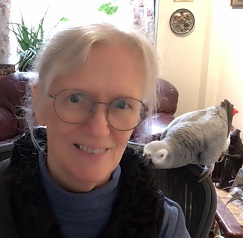When you write for a trade publisher, you follow that publisher’s guidelines. Usually these are fairly straightforward: word limit, age range, editorial preferences.
In the educational market, you will enter a whole new world of guidelines, or “specs” (specifications), that you must heed. Whether your assignment is fiction or nonfiction, test questions or poetry or something else, it will often include many pages of instructions and sometimes even a large multi-column, multi-line spreadsheet that looks downright scary.
Don’t be scared! The truth is that your editor wants you to do well and will work with you to help you succeed.
First read the project overview to be sure you understand how you fit into the big picture. What is this project of which you will be a part? How will your material be used? Be sure you know exactly what they’re asking you to do. Don’t worry about the technical specs yet–things like word count and reading level–but concentrate on content. Is this to be supplemental classroom reading or part of a learning unit? Narrowly focused nonfiction? Problem-resolution fiction? A broad overview of a topic? Fiction to reinforce specific reading skills? If you have any questions, ask your editor for clarification. The editor would MUCH rather you ask than guess. Having a clear concept of your context will make it ever so much easier to write your first draft.
Before you begin to write, though, it’s time to dig into those hairy, scary specs. Whether there’s a spreadsheet or narrative instructions, the first thing I do is highlight JUST the parts that pertain to my assignment. The publisher’s information probably has all the specs for all the manuscripts at all the levels in the project. I f you’re writing a second grade text, you can ignore the instructions for sixth grade texts. Once you’ve picked out just your own part, the specs immediately look less intimidating.
In the educational market, while specs are more detailed than in trade, the publishers also provide more support. For example, they will ask for a certain Lexile range or readability level but also give you a password to an online text analyzer that does all the math for you.
Your best bet is to start writing in your own natural voice, as if talking to a friend. Then check your rough draft against the general guidelines to be sure you’re on target for content. This is also a good time to run your manuscript through the online analyzer to see where you stand on the technical specs. Don’t panic when you see the results! Having a first draft come in at exactly the right word count, Lexile level, sentence length, and so on would be nothing short of a miracle. But now you have an idea what you need to do on your first edit. The Highlights workshop will give you tips and tricks for adjusting whatever needs to change.
The process continues in a cycle. You revise your draft, check it against the specs again, and send it to your editor as soon as you’re happy with it. The editor may love it as is or may send you comments to address with another edit. Repeat until you are both pleased. Cash your check.







